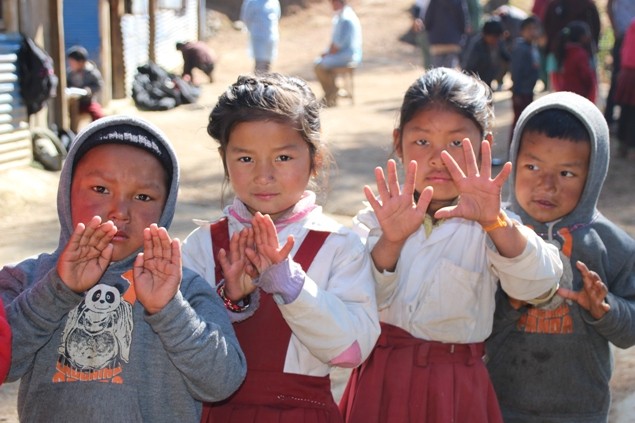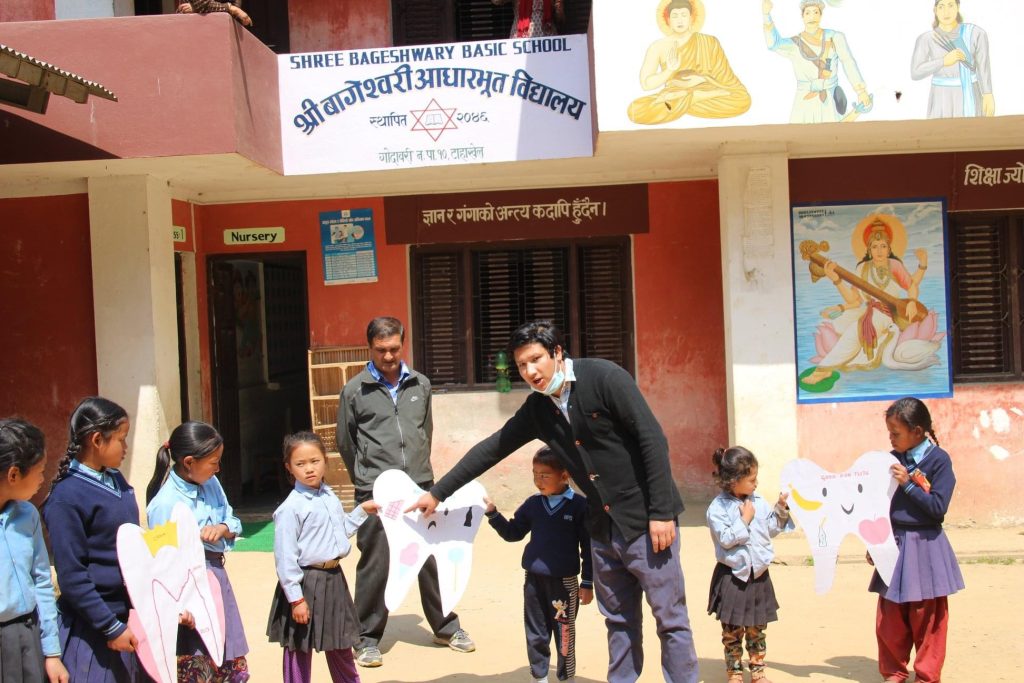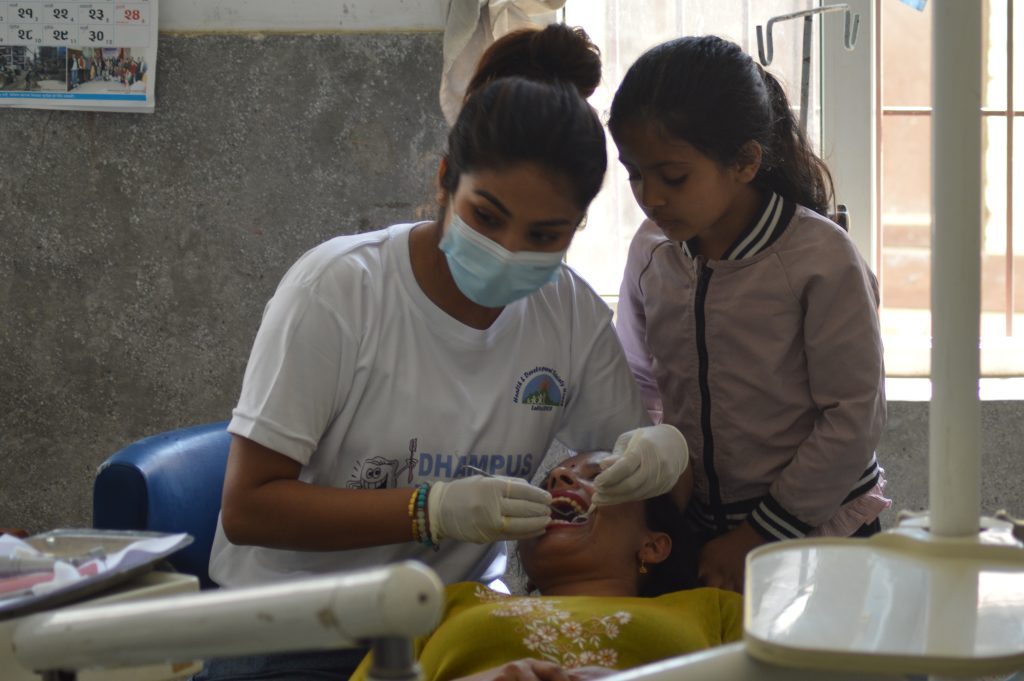Situation analysis
Dental caries is one of the most prevalent childhood diseases in Nepal, especially in the young children. Most of the dental caries are not treated because of the lack of knowledge or unavailability of the services which leads to pain and eventually leads to tooth loss. This has bad impact on the quality of life of school children and further when they become adults.
A prevalence of 57.5% of 5-6-year-olds and 25.6% of children of 12-13-year-old suffer from dental caries. The report of pain and discomfort due to toothache ranges from 18% in 5-6-year-olds to 64% in Older Adults. Amongst adolescent schoolchildren, the most frequent reported impact of pain and discomfort is the inability to eat, followed by inability to speak. 55% of 50+ year adults reported having trouble eating hard foods. This has hence got an indirect effect on the overall nutrition intake of the population resulting into other health problems.
Gingivitis and calculus was dominant in young children and adolescents: 5-6-year-olds (58.2%), 12-13-year-olds (62.8%). 43.8% of 35-49-year-old adults and 34.3% of the 50+ adults have the highest ‘4-5 mm pockets’. 35-49-year-old adults from the Upper Hills had significantly poorer periodontium (p<0.000). Healthy periodontium is significantly associated with regular brushing, use of fluoride toothpaste, urban location, and level of education and avoidance of consumption of tobacco products.
Problem statement
At present, the main reasons for not visiting a dentists on a regular basis are due to low felt or perceived needs prior to the experience of pain, poor access to dental services and the cost of dental treatment.
The main oral health related problems occur because of the change in the earlier raw diet to a more refined sticky diet of today. Besides this, the lack of awareness and diagnosis at an early stage along with early treatment are the main resaons behind the problem reaching an even worse scenario. Lack of oral health service delivery even poses a threat leading to death of the people suffereing from oral health related problems. Providing the people with the basic emergncy treatment such as extraction of carious and problematic teeth and restoration of possible teeth with filling material will help solve the problem to some extent.
Current gaps
- Monitoring and enforcement of policy
- Public awareness
- Education
- Advocacy
- Implementation of strategies




